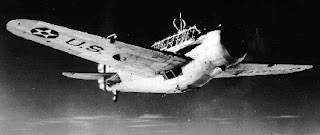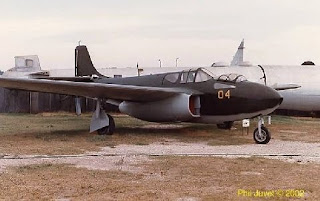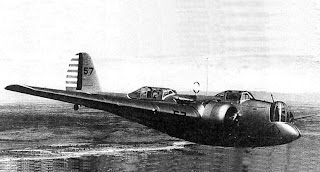Sunday, June 14, 2009
Mind-blowing Engineering
Ten Worst airplanes
July 7, 2008


B.O.A.C de Havilland Comet
 Hughes H-4 Hercules
Hughes H-4 Hercules
LWS-4 Zubr

Christmas Bullet
 Beechcraft Starship
Beechcraft Starship Hiller VZ-1
Hiller VZ-1 A-12 Avenger II
A-12 Avenger II Royal Aircraft B.E.2
Royal Aircraft B.E.2 Boeing XB 15
Boeing XB 15Friday, June 12, 2009
Future Technology and Aircraft Types

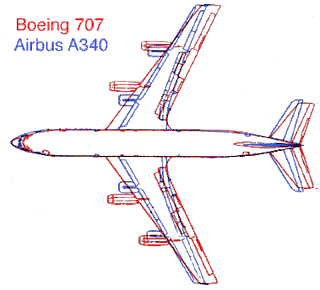
When we think about what may appear in future aircraft designs, we might look at recent history. The look may be frightening. From first appearances, anyway, nothing has happened in the last 40 years!
There are many causes of this apparent stagnation. The first is the enormous economic risk involved. Along with the investment risk, there is a liability risk which is of especially great concern to U.S. manufacturers of small aircraft. One might also argue that the commercial aircraft manufacturers are not doing too badly, so why argue with success and do something new? These issues are discussed in the previous section on the origins of aircraft.Because of the development of new technologies or processes, or because new roles and missions appear for aircraft, we expect that aircraft will indeed change. Most new aircraft will change in evolutionary ways, but more revolutionary ideas are possible too.This section will discuss several aspects of future aircraft including the following:
1.Improving the modern airplane
2.New configurations
3.New roles and requirements
Improving the Modern Airplane
Breakthroughs in many fields have provided evolutionary improvements in performance. Although the aircraft configuration looks similar, reductions in cost by nearly a factor of 3 since the 707 have been achieved through improvements in aerodynamics, structures and materials, control systems, and (primarily) propulsion technology. Some of these areas are described in the following sections.

Active Controls
Active flight control can be used in many ways, ranging from the relatively simple angle of attack limiting found on airplanes such as the Boeing 727, to maneuver and gust load control investigated early with L-1011 aircraft, to more recent applications on the Airbus and 777 aircraft for stability augmentation.
Reduced structural loads permit larger spans for a given structural weight and thus a lower induced drag. As we will see, a 10% reduction in maneuver bending load can be translated into a 3% span increase without increasing wing weight. This produces about a 6% reduction in induced drag.Reduced stability requirements permit smaller tail surfaces or reduced trim loads which often provide both drag and weight reductions.
Such systems may also enable new configuration concepts, although even when applied to conventional designs, improvements in performance are achievable. In addition to performance advantages the use of these systems may be suggested for reasons of reliability, improved safety or ride quality, and reduced pilot workload, although some of the advantages are arguable.
New Airfoil Concepts
Airfoil design has improved dramatically in the past 40 years, from the transonic "peaky" sections used on aircraft in the 60's and 70's to the more aggressive supercritical sections used on today's aircraft.
Continuing progress in airfoil design is likely in the next few years, due in part to advances in viscous computational capabilities. One example of an emerging area in airfoil design is the constructive use of separation. The examples below show the divergent trailing edge section developed for the MD-11 and a cross-section of the Aerobie, a flying ring toy that uses this unusual section to enhance the ring's stability.
Flow Near Trailing Edge of DTE Airfoil and Aerobie Cross-Section
Flow Control
Subtle manipulation of aircraft aerodynamics, principally the wing and fuselage boundary layers, can be used to increase performance and provide control. From laminar flow control, which seeks to reduce drag by maintaining extensive runs of laminar flow, to vortex flow control (through blowing or small vortex generators), and more recent concepts using MEMS devices or synthetic jets, the concept of controlling aerodynamic flows by making small changes in the right way is a major area of aerodynamic research. Although some of the more unusual concepts (including active control of turbulence) are far from practical realization, vortex control and hybrid laminar flow control are more likely possibilities.
Structures
Structural materials and design concepts are evolving rapidly. Despite the conservative approach taken by commercial airlines, composite materials are finally finding their way into a larger fraction of the aircraft structure. At the moment composite materials are used in empennage primary structure on commercial transports and on the small ATR-72 outer wing boxes, but it is expected that in the next 10-20 years the airlines and the FAA will be more ready to adopt this technology.
New materials and processes are critical for high speed aircraft, UAV's, and military aircraft, but even for subsonic applications concepts such as stitched resin film infusion (RFI) are beginning to make cost-competitive composite applications more believable.
Propulsion
Propulsion is the area in which most evolutionary progress has been made in the last few decades and which will continue to improve the economics of aircraft. Very high efficiency, unbelievably large turbines are continuing to evolve, while low cost small turbine engines may well revolutionize small aircraft design in the next 20 years. Interest in very clean, low noise engines is growing for aircraft ranging from commuters and regional jets to supersonic transports.
Multidisciplinary Optimization
In addition to advances in disciplinary technologies, improved methods for integrating discipline-based design into a better system are being developed. The field of multidisciplinary optimization permits detailed analyses and design methods in several disciplines to be combined to best advantage for the system as a whole.
The figure here shows the problem with sequential optimization of a design in individual disciplines. If the aerodynamics group assumes a certain structural design and optimizes the design with respect to aerodynamic design variables (corresponding to horizontal motion in the conceptual plot shown on the right), then the structures group finds the best design (in the vertical degree of freedom), and this process is repeated, we arrive at a converged solution, but one that is not the best solution. Conventional trade studies in 1 or 2 or several parameters are fine, but when hundreds or thousands of design degrees of freedom are available, the use of more formal optimization methods are necessary.
Although a specific technology may provide a certain drag savings, the advantages may be amplified by exploiting these savings in a re-optimized design. The figure to the right shows how an aircraft was redesigned to incorporate active control technologies. While the reduced static margin provides small performance gains, the re-designed aircraft provides many times that advantage. Some typical estimates for fuel savings associated with "advanced" technologies are given below. Note that these are sometimes optimistic, and cannot be simply added together.
1.Active Control .............10%
2.Composites ..................20%
3.Laminar Flow ..............10%
4.Improved Wing ...........10%
5.Propulsion ...................20%
Total ..............................70%
New Configuration Concepts
Apart from evolutionary improvements in conventional aircraft, revolutionary changes are possible when the "rules" are changed. This is possible when the configuration concept iteself is changed and when new roles or requirements are introduced.
The following images give some idea of the range of concepts that have been studied over the past few years, some of which are currently being pursued by NASA and industry.

The BWB design is intended to improve airplane efficiency through a major change in the airframe configuration. The thick centerbody accommodates passengers and cargo without the extra wetted area and weight of a fuselage. Orginally designed as a very large aircraft with as many as 800 passengers, versions of the BWB has been designed with as few as 250 passengers
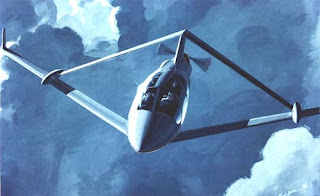 Joined Wing
Joined WingThe joined wing design was developed principally by Dr. Julian Wolkovitch in the 1980's as an efficient structural arrangement in which the horizontal tail was used as a sturcural support for the main wing as well as a stabilizing surface. It is currently being considered for application to high altitiude long endurance UAVs.

Oblique Flying Wing
One of the most unusual concepts for passenger flight is the oblique wing, studied by Robert T. Jones at NASA from 1945 through the 1990s. Theoretical considerations suggest that the concept is well suited to low drag supersonic flight, while providing a structurally efficient means of achieving variable geometry.
New Roles and Requirements
In addition to new configuration ideas, new roles and requirements for aircrafrt may lead to new aircraft concepts. Some of these are summarized below.
Pacific Rim Travel
As global commerce continues to increase, the need for passenger and cargo transportation grows as well. Many have speculated that growth in pacific rim travel may be the impetus for high speed aircraft development. The figure above suggests how the time required for flight from Los Angeles to Tokyo varies with cruise Mach number. (The somewhat facetious Mach 8 aircraft requires extra time to cool off before passengers can deplane.)

Supersonic transportation (Boeing High Speed Civil Transport Concept)
 Ground Effect Cargo Tranport Concept
Ground Effect Cargo Tranport ConceptVehicles designed for missions other than carrying passengers include military aircraft with new constraints on radar detection (low observables), very high altitude aircraft, such as the Helios solar powered aircraft intended for atmospheric science and earth observation studies, and vehicles such as the Proteus, designed as a communications platform.

Low Observables (B2 Bomber)
 Autonomous Air Vehicles (Pathfinder: a prototype for Helios solar UAV)
Autonomous Air Vehicles (Pathfinder: a prototype for Helios solar UAV)
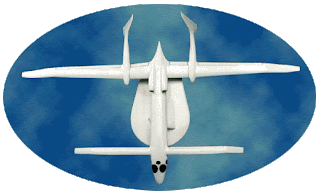
Halo Autonomous Air Vehicle for Communications Services (an AeroSat)
Finally a new class of air vehicles intended to provide lower cost access to space is under study. The near-term future of such designs depends on the economic health of the commercial space enterprise and it presently appears that these concepts are not likely to be seen soon.
 Access to Space
Access to Space
Conclusions
1. Improved understanding and analysis capabilities permit continued improvement in aircraft designs
2. Exploiting new technologies can change the rules of thegame,permitting very different solution
3. New objectives and constraints may require unconventional configurations
4. Future progress requires unprecedented communication among aircraft designers, scientists, and computational specialists
Airbus, Shell begin alternate fuel research
By: Thierry Dubois
Thursday, June 11, 2009
The World's First Flying Hotel








Wednesday, June 10, 2009


